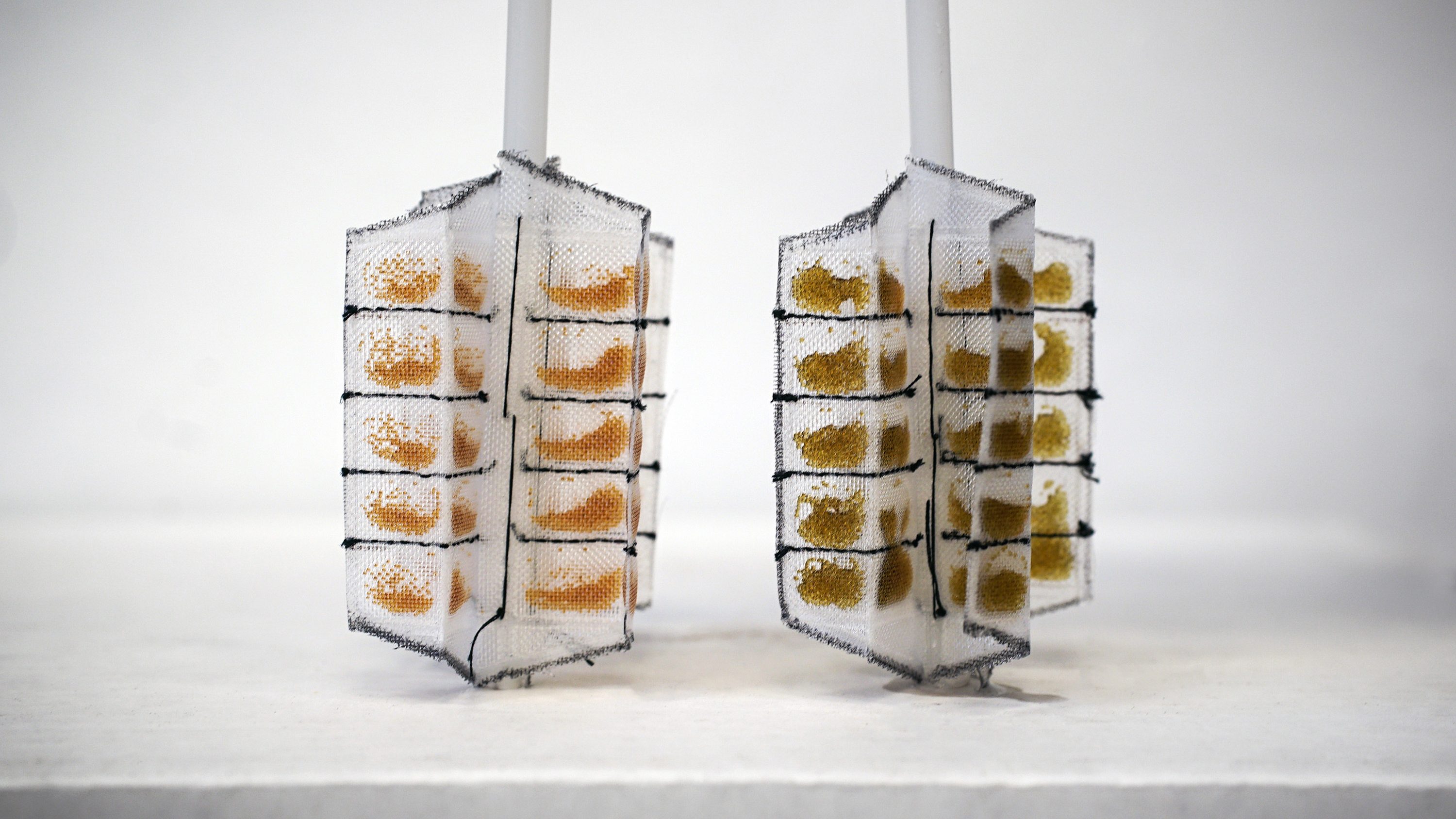
Monitoring water systems for dangerous heavy metals often requires workers to collect many liters of water and chemically preserve samples before transporting them to distant laboratories for analysis.
To simplify the process, MIT researchers developed a device that absorbs trace contaminants in water and preserves them in a dry state so the samples can be easily dropped in the mail. The design is inspired by dry blood spotting, a technique that involves pricking a person’s finger and collecting a drop of blood on a card of cellulose.
To create a similar collection system for heavy metals, the team used polymer beads called ion-exchange resins, each containing groups of molecules bound to a hydrogen ion. In water, the hydrogen comes off and can be exchanged with another ion, such as a heavy metal cation. In this way, the beads can absorb heavy metals from water.
The researchers made a stirring device from a polymer mesh cut into propeller-like panels. Emily Hanhauser, SM ’17, a mechanical engineering graduate student, hand-stitched small pockets in each panel and filled them with the beads. She then stitched them closed and attached each panel to a polymer stick to resemble a whisk.
The researchers tested the device on samples of water that they spiked with various heavy metals. They stuck a device into each sample, twirled it around to catch the contaminants, and let it dry overnight. It turned out to absorb and preserve about 94% of the metals in each sample, which the researchers could then collect by dipping the device in hydrochloric acid.
“[This project has] taught me a lot about our own water issues and trace contaminants in the United States,” says Hanhauser. “For instance, someone who has heard about the water crisis in Flint, Michigan, who now wants to know what’s in their water, might one day order something like this online, do the test themselves, and send it to a lab.”
Keep Reading
Most Popular
Large language models can do jaw-dropping things. But nobody knows exactly why.
And that's a problem. Figuring it out is one of the biggest scientific puzzles of our time and a crucial step towards controlling more powerful future models.
How scientists traced a mysterious covid case back to six toilets
When wastewater surveillance turns into a hunt for a single infected individual, the ethics get tricky.
The problem with plug-in hybrids? Their drivers.
Plug-in hybrids are often sold as a transition to EVs, but new data from Europe shows we’re still underestimating the emissions they produce.
Stay connected
Get the latest updates from
MIT Technology Review
Discover special offers, top stories, upcoming events, and more.